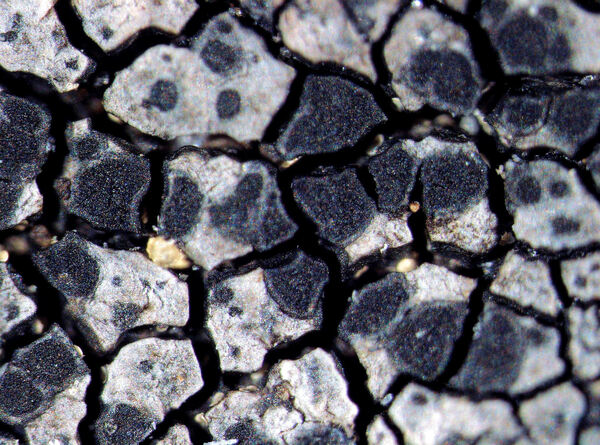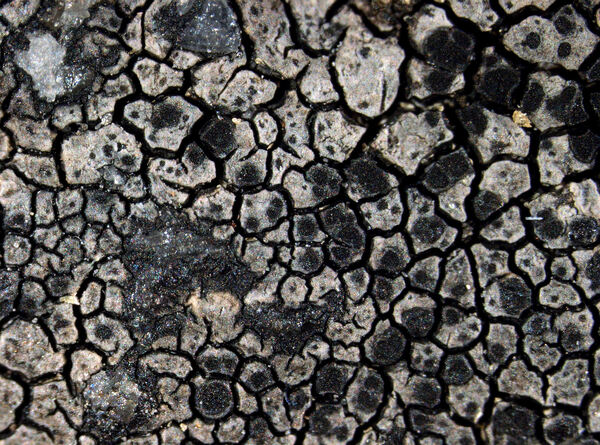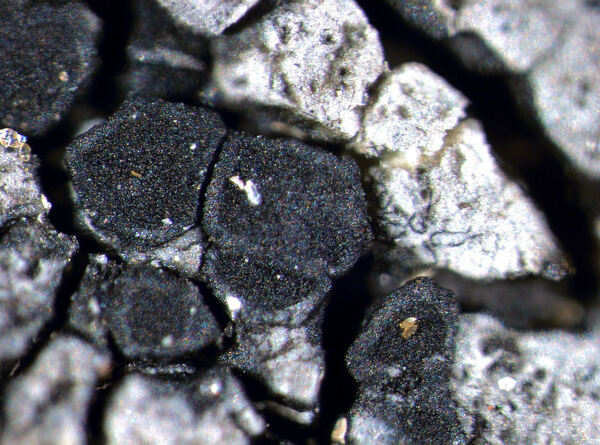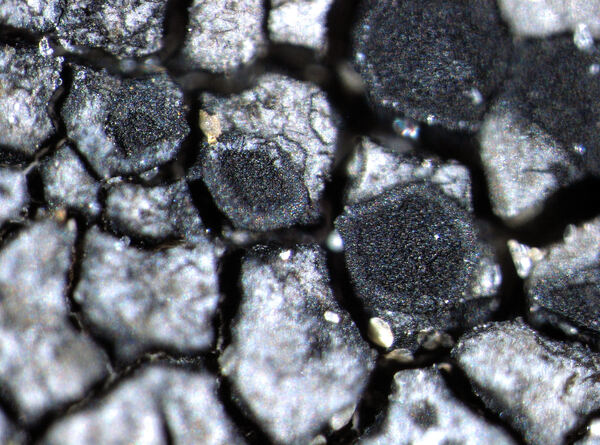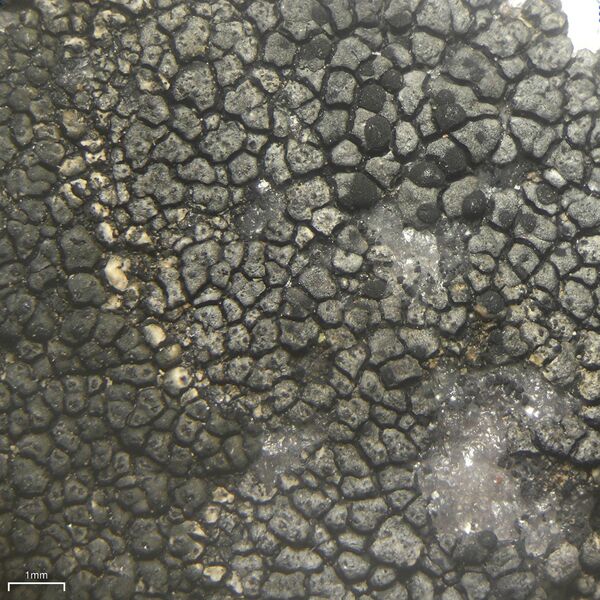Buellia uberior Anzi
Atti Soc. Ital. Sc. Nat. Milano, 9: 252, 1866.
Synonyms: Buellia atrocinerea (Anzi) Zahlbr.; Buellia contermina Arnold; Buellia lactea var. atrocinerea Anzi; Buellia malmei auct.; Buellia nitida Eitner
Distribution: N - Frl (Tretiach & Hafellner 2000), Ven, TAA (Nascimbene & al. 2022), Lomb, VA (Piervittori & Isocrono 1999). C - Tosc, Sar (Scheidegger 1993).
Description: Thallus crustose, episubstratic, often growing on the thalli of Schaereria fuscocinerea, pale to dark grey, shiny, areolate, the areoles 0.3-0.8 mm wide, forming 1-4(-5) cm wide patches, often delimited by a dark prothallus. Cortex of anticlinally arranged, cellular hyphae, the terminal cells swollen, with brown caps; medulla white, I+ blue. Apothecia black, cryptolecanorine to zeorine, 0.2-0.8(-1) mm across, immersed in the areoles, with a black, epruinose, mostly flat disc and an indistinct proper margin. Proper exciple thin, Aethalea-type, the inner hyphae hyaline, prosoplectenchymatous, the outer hyphae parallel and usually strongly brown- to olive-pigmented, N+ reddish; epithecium olive-green to olive-brown, N+ red; hymenium colourless, not inspersed with oil droplets, 42-70 µm high; hypothecium colourless to medium brown. Asci 8-spored, clavate to cylindrical-clavate, the apical dome K/I+ dark blue with a pale, conical-pointed apical cushion (axial mass), the wall I-, but the thin outer gel I+ blue, Bacidia-type. Ascospores 1-septate, constricted at septum, brown, broadly oblong, 8-12(-14) x 4.5-7 µm, Buellia-type, the wall >1.5 µm thick, with a striate ornamentation. Pycnidia black, immersed in the thallus. Conidia bacilliform, 3.5-5(-7) x 0.5-1 µm. Photobiont chlorococcoid. Spot tests: thallus K- or K+ yellow-orange, C+ red, KC+ red, P- or P+ faintly orange. Chemistry: gyrophoric acid (major), variable amounts of stictic acid. Note: a mainly arctic-alpine, circumpolar species found on hard, lime-free siliceous rocks, predominantly on inclined to subvertical faces wetted by rain in upland areas, with optimum above treeline; the species is most common in the Alps, rarer in the high Mediterranean mountains, and seems to be facultatively parasymbiontic.
Growth form: Crustose
Substrata: rocks
Photobiont: green algae other than Trentepohlia
Reproductive strategy: mainly sexual
paras Schaereria fuscocinerea
Commonnes-rarity: (info)
Alpine belt: rare
Subalpine belt: very rare
Oromediterranean belt: extremely rare
Montane belt: extremely rare
Submediterranean belt: absent
Padanian area: absent
Humid submediterranean belt: absent
Humid mediterranean belt: absent
Dry mediterranean belt: absent

Predictive model
Growth form: Crustose
Substrata: rocks
Photobiont: green algae other than Trentepohlia
Reproductive strategy: mainly sexual
paras Schaereria fuscocinerea
Commonnes-rarity: (info)
Alpine belt: rare
Subalpine belt: very rare
Oromediterranean belt: extremely rare
Montane belt: extremely rare
Submediterranean belt: absent
Padanian area: absent
Humid submediterranean belt: absent
Humid mediterranean belt: absent
Dry mediterranean belt: absent

Predictive model
 INDEX FUNGORUM
INDEX FUNGORUM
 GBIF
GBIF
 DOLICHENS
DOLICHENS
